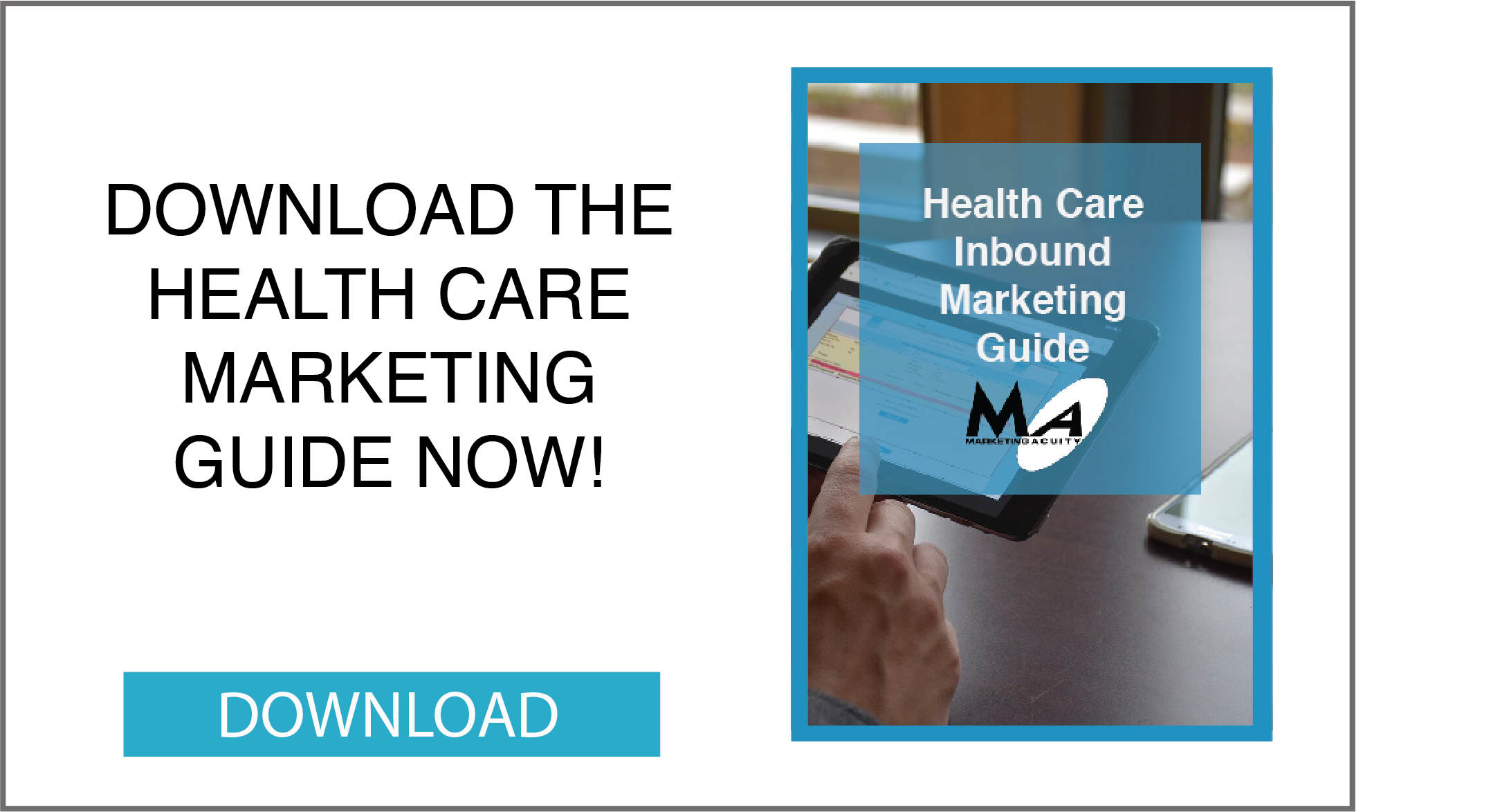By Ray Hidalgo
The potential buyers of health care products are among the more digitally savvy customers to test the waters of the consumer marketplace. To that end, if a health care vendor – especially a smaller vendor – means to engage with and generate more leads, it needs to rethink traditional marketing. Health care customers are not so easily wooed by interruptive cold calls and cries for attention masquerading as sales pitches. Consider appealing to buyer intelligence; consider implementing the education-oriented concept of inbound marketing.

It’s Not About Your Health Care Product
To use an example, let’s imagine that a vendor is cold calling a rehabilitative clinic to supply it with 15 wheelchairs. Through a traditional sales pitch, a supplier might talk about impressive stress tests on the wheelchair’s integrity, special discounts, or patented emergency brakes to make a convincing sell to the clinic. But what if it is a rehabilitative sports clinic that is focused on short-term therapy that has less need for wheelchairs than what may be needed for long-term medical care? Ideally, this distinction could had been determined ahead of the conversation with questions that sought out the clinic’s needs, wants, and challenges – none of which aligned with the supplier’s 15 wheelchairs anyway. So the big question is, how can a vendor attract legitimate leads and avoid these dead ends?
Buyers Need More Than a Brochure
Imagine how everything that a prospective buyer may possibly want to know about a product could be available online, save for in-person demonstrations for physical devices. The inbound customer experience is a digital one, and delivering useful information to prospective consumers to the right people at the right time is one of inbound marketing’s central goals. Although sales representatives play a key part in the purchasing process, the steps that precede and follow their role are no longer well-defined in an increasingly modernized buyer’s journey. As a whole, the inbound methodology can be summarized into the four following steps:
- Attract – The core of any inbound marketing campaign is a web presence that attracts ideal prospective buyers. Successful inbound campaigns depend on mobile-friendly and SEO optimized websites. This means that a vendor can present its medical products within an easily accessible web presence.
Although the holistic designs of these websites are also important, the Attract stage heavily relies on drawing potential leads inbound by leveraging quality, informative content through search engines and social media.
To that effect, strong search result rankings and content that talks about a health care product’s value to a customer constructs strong framework for generating promising leads, especially since health care purchasers are probably talking to other companies that sell similar products. The key difference is that a vendor needs to absolutely avoid talking about its own product and address what the buyer is looking for, even if the product is designed for the buyer (i.e. talk about the importance of a prosthetic arm’s composition rather than the actual composition of a model that the vendor in question offers).
- Convert – While successfully engaging with a potential lead is always a positive for a company’s analytics and content strategy, it can easily be an unqualified lead. It’s important to note that leads that are actively seeking health care products tend to already be immersed in the market with an agenda in mind; they indeed may know their needs, wants, and challenges and will approach vendors toward the bottom of the sales funnel as educated consumers
During the convert stage, successful inbound campaigns should guide potential buyers toward the right product or solution, even if it isn’t one that they can provide. The beauty of SEO and inbound strategy that these informed purchasers should gravitate toward content that is tailored to match what they are looking for: content that caters to their buyer persona.
- Close – The gap between converting a lead and closing a lead is the proverbial sweet spot for health care sales. But it requires shifting the working dynamic between a vendor’s sales and marketing teams. This can be accomplished with a Service Level Agreement that unites both aspects of your business. Within this agreement, a company can jump on the same page and align the standards for qualifying leads, distributing workflow, and managing customer relations between marketing and sales teams.
The strategic change may prove uncomfortable and unfamiliar for a vendor’s business development teams, but it will accommodate the more elaborate, yet sustainable inbound methodology. And even if traditional marketing is perceived as safe to a vendor’s company, digital marketing (not necessarily inbound marketing) should be recognized for its strength in the health care product industry. In fact, a MM&M Healthcare Marketer’s Trend Report found that 86 percent of the healthcare professionals it surveyed were engaged in digital marketing. Essentially, if a vendor isn’t doing it, its competitors are more than likely building a profitable web presence to overtake it in profit.
- Delight – Inbound marketing is meant to be the proverbial gift that keeps on giving. Even when a consumer phases out, inbound marketers can encourage rave Google reviews, conduct interviews of customers for use in marketable product content, and receive helpful feedback – of course this requires stellar customer service on behalf of a business.
Next? Generate Content to Generate Leads
If there is anything to take away from this blog, it’s that the health care industry is increasingly driven by the Internet. Extensive research by prospective buyers has shifted away from speaking with salespeople to perusing endless results from search engines. These particular decision makers might actually skip top-of-the-funnel content such as blogs and opt to find out what a product is all about in-person, but until then, vendors need only put that phone and directory down and start building content such as blogs, eBooks, and videos. At the very least, customers will know what they are looking at. At the very best, they’re ready to call the vendor themselves. And that’s always a promising lead.
Want to learn even more about how inbound marketing can benefit your healthcare business? Download the free Inbound Marketing Guide below!






